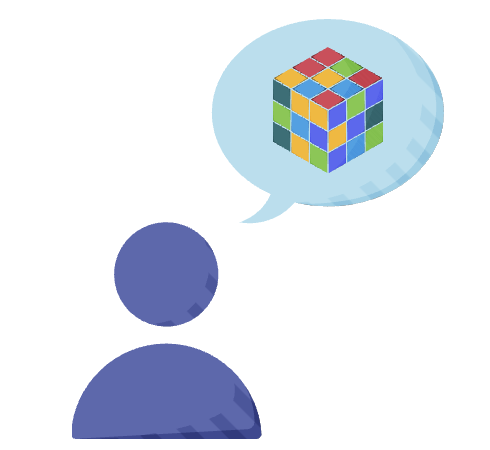X, formerly known as Twitter, is a powerhouse in social media and technology, shaping conversations worldwide. As a leader in real-time content delivery, AI-driven recommendations, and scalable cloud infrastructure, it offers an exciting work environment for top engineers, developers, and product managers.
Getting hired at Twitter is challenging due to its rigorous hiring process. This blog will provide a step-by-step breakdown of Twitter’s interview stages, technical and system design preparation, and behavioral interview strategies. You’ll also find top Twitter interview questions with solutions to help you succeed.
Why work at Twitter
Twitter is a global leader in social media and real-time content delivery, offering a fast-paced and innovative work environment. With a strong focus on technology, user experience, and large-scale distributed systems, Twitter provides a unique opportunity to work on high-impact projects that shape global conversations.
- Work on cutting-edge technology: Twitter operates on a highly scalable infrastructure, handling millions of tweets per second. Engineers and developers at Twitter work on groundbreaking technologies that improve platform reliability, security, and user engagement.
At Twitter, you’ll be tasked to:
- Build real-time distributed systems handling millions of tweets per second.
- Innovate with AI-driven personalization and content ranking algorithms.
- Contribute to microservices architecture, high-availability cloud solutions, and API security frameworks.
- Highly competitive salaries and benefits: Twitter offers some of the most competitive compensation packages in the tech industry. Employees receive excellent salaries, stock options, and benefits that promote professional growth and personal well-being.
Twitter offers:
- Top-tier compensation, RSUs (restricted stock units), and performance bonuses.
- Comprehensive health benefits and work-from-home flexibility.
- Generous learning and development budgets for certifications and conferences.
- Work culture and career growth: Twitter fosters a culture of innovation, collaboration, and autonomy. Employees are encouraged to take ownership of their work, contribute new ideas, and grow within the company through continuous learning and mentorship programs.
Like any other MAANG company, Twitter makes sure that:
- They promote a collaborative, inclusive, and fast-paced culture.
- Employees have the autonomy to drive impactful projects.
- A hybrid and remote-friendly work environment is maintained.
Twitter hiring process: Step-by-step breakdown
The Twitter hiring process is structured to identify top talent that aligns with the company’s mission and values. Each stage evaluates technical skills, problem-solving abilities, and cultural fit to ensure candidates are well-prepared to contribute to Twitter’s success.
Step 1: How to apply for a job at Twitter
The first step in landing a job at Twitter is crafting an appealing application. Understanding what hiring managers look for and tailoring your resume can significantly increase your chances of securing an interview.

- Where to apply: Twitter Careers or LinkedIn
- Resume optimization:
- Tailor your resume to backend engineering, AI, data science, or frontend frameworks.
- Use measurable achievements (e.g., “Improved API response time by 40%”).
- Optimize for keywords related to your field.
Step 2: Twitter recruiter phone screen questions
If your application is shortlisted, you’ll be invited to a recruiter phone screen. This initial conversation helps Twitter assess your background, experience, and motivations while allowing you to learn more about the role.

- Duration: ~30 minutes
- Topics covered:
- Your background, career goals, and tech stack expertise
- How your skills align with Twitter’s mission and work culture
- Expect basic behavioral and product-related questions
- Common questions:
- “Why do you want to work at Twitter?”
- “What excites you about this role?”
Step 3: Twitter technical phone interview
The technical phone interview is an important step where engineers assess your problem-solving skills and coding proficiency. Preparing for algorithmic challenges and system design concepts is key to excelling in this round.

- Conducted by: A Twitter engineer
- Duration: 45-60 minutes
- Topics:
- Data structures and algorithms (LeetCode Medium/Hard)
- System Design problems (for senior roles)
- Example questions:
- Implement a Twitter feed ranking system.
- Design a real-time messaging architecture.
- Solve graph traversal or dynamic programming problems.
Step 4: Onsite interview process (Twitter’s “loop”)
The on-site interview, or “The loop,” consists of multiple rounds to evaluate your technical expertise, problem-solving ability, and cultural alignment. Strong performance across all rounds is crucial to securing an offer.
- Total Rounds: 4-6 rounds
- Technical interviews (2-3 rounds):
- Coding challenges: Advanced algorithmic problem-solving
- System design: Create scalable, real-world applications
- Behavioral interview:
- Uses the STAR method (Situation → Task → Action → Result)
- Bar raiser interview:
- An independent Twitter employee conducts the interview.
- The interview evaluates whether you uphold Twitter’s hiring standards.
Step 5: Twitter offer and negotiation tips
After completing the interview process, you may receive an offer from Twitter. Understanding the components of your compensation package and effectively negotiating your salary can help you maximize your earnings and benefits.
- Compensation includes: Base salary, RSUs, and bonuses
- Negotiation strategy:
- Benchmark salaries on Levels.fyi
- Consider benefits like remote work flexibility and stock options
How to prepare for the Twitter coding and System Design interviews
Preparation is key to cracking Twitter’s challenging technical interviews. A strong grasp of data structures, algorithms, system design, and behavioral questions will help you stand out. Below, we list key topics and resources to guide your study plan.
Top data structures and algorithms for Twitter interviews
Twitter’s coding interviews test your problem-solving skills and efficiency in writing optimized code. Mastering fundamental data structures and algorithms is crucial for tackling real-world engineering challenges.
- Key topics to focus on:
- Best platforms for practice:
- LeetCode’s Twitter-specific problems
- LeetCode, Educative, InterviewBit, and HackerRank
Twitter System Design interview topics
System design interviews evaluate your ability to architect scalable and efficient software solutions. Expect questions that test your understanding of distributed systems, caching strategies, and fault-tolerant designs.

- What to study:
- Designing scalable distributed systems
- Load balancing, caching, microservices, CAP theorem
- API rate limiting and message queues
- Recommended resources:
Behavioral interview tips for Twitter
Behavioral interviews help evaluate how well you align with Netflix’s culture and values—particularly ownership, accountability, communication, and decision-making under uncertainty. These conversations are just as important as the technical rounds, and they offer a chance to show how you approach challenges, work with others, and drive impact.
To prepare effectively, reflect on past projects where you demonstrated adaptability, leadership, problem-solving, or resilience. Structured, real-world examples show more than just what you’ve done—they reveal how you think and operate in high-stakes situations.
Common behavioral questions include:
- “Tell me about a time you worked on a high-impact project.”
- “How do you handle conflicts in a team?”
- “Describe a time you decided with limited information.”
- “Tell me about a time you received constructive feedback—how did you respond?”
Use the STAR framework to structure your answers:
- Situation: Set the scene with relevant context.
- Task: Outline your responsibility or challenge.
- Action: Explain the steps you took to handle it.
- Result: Share the outcome and what you learned.
Prepare 4–5 examples that reflect key themes in Netflix’s culture—initiative, direct communication, learning from failure, and driving measurable results. Being specific and honest will go a long way.
Additional resources for Twitter interview preparation
To prepare effectively for a Twitter interview, consider using top coding platforms like LeetCode Premium and Educative.io to strengthen your problem-solving skills. AI-powered mock interview tools—such as Educative’s AI Mock Interviewer—can be especially useful for interview practice. These tools simulate technical and behavioral questions in a format similar to Twitter’s interview process, providing targeted feedback to help you refine your approach and build confidence.
Final tips for success
- Ask thoughtful, clarifying questions
- Similar to real projects, interview problems may not always be fully defined upfront. Don’t hesitate to ask your interviewer for clarification if something’s unclear. It shows you think critically about the problem before jumping to a solution.
- Communicate your thought process
- Talk through your approach as you work. This will help your interviewer understand your thoughts and allow them to collaborate. It’s not just about the solution—how you get there matters just as much.
- Stay receptive to feedback
- If your interviewer shares input or offers an alternative idea, take a moment to consider it. You don’t need to change your answer immediately, but walking them through your reasoning shows openness and depth of thought.
- Don’t let roadblocks stop your progress
- If you hit a difficult point, pause, reassess, and talk it through. Walking your interviewer through your line of reasoning can lead to helpful nudges or collaborative problem-solving.
- Use the STAR method for behavioral questions
- Structure your responses to behavioral questions using the STAR format:
- Situation: Set the context
- Task: Describe the objective or problem
- Action: Explain what you did
- Result: Share the outcome
- Structure your responses to behavioral questions using the STAR format:
Prepare 4–5 stories from your experience highlighting ownership, decision-making, and impact. Use the STAR approach to present these clearly and concisely.
Conclusion: Ace your Twitter interview and land your dream job!
Twitter’s interview process is challenging but highly rewarding. Mastering coding, system design, and behavioral questions can increase your chances of success. Stay consistent, practice daily, and approach each interview with confidence!
